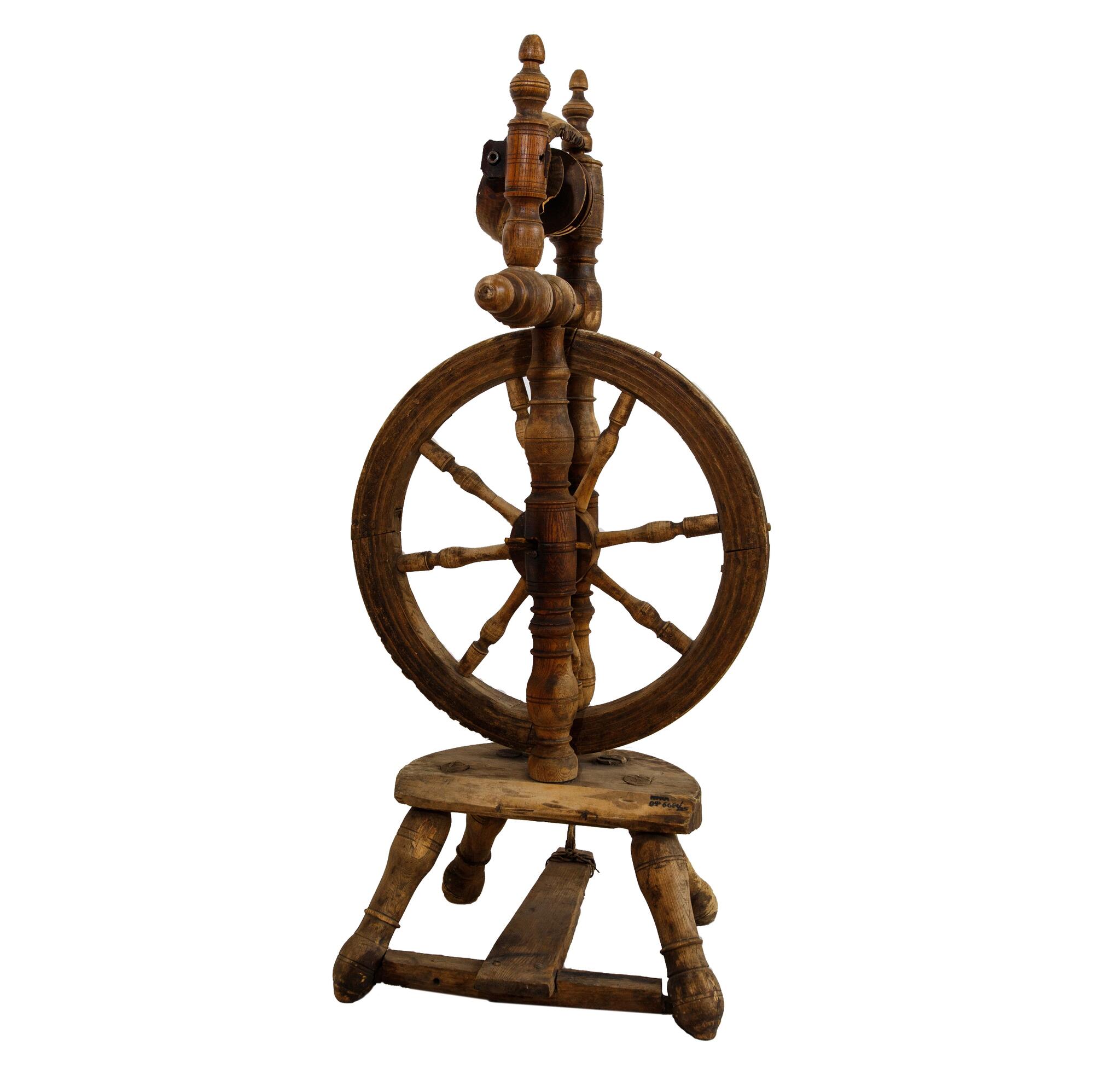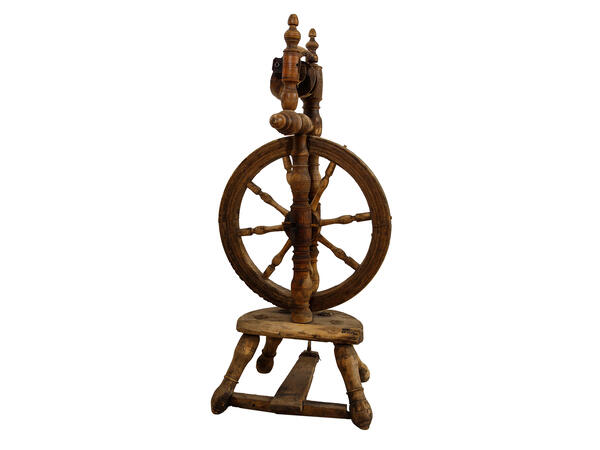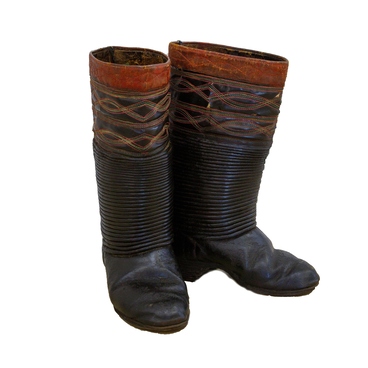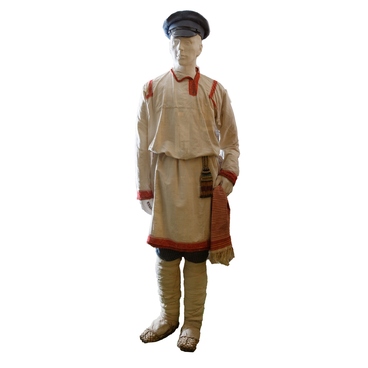A spinning wheel in the old days was a machine for spinning yarn. It consisted of a wheel, a flat foot, a bobbin with a spool, a wooden crank, a leather drive belt or string. The wheel was attached to the bobbin by a string or belt, and the wooden crank to the foot. All parts were fastened in a certain order on the stand. The wheel could be in the same plane as the bobbin or under it. Flax fiber or wool prepared for spinning was attached to a wooden paddle, which was inserted into the upper part of the stand of the machine.
Spinning wheel were of two types: “standing” and “lying”. The difference between them consisted in the location of a wheel and a spool with a spindle. Mordvins used a “standing” spinning wheel much more often than a “lying” one.
At first, the spinner manually twisted some fiber into thread, led it through the hooks of the bobbin and fixed it on the spool. Then she, pushing with her foot on the footboard, set the wheel in motion, which, for its part, made the bobbin turn. At the same time, she pulled out a fiber by hand, which, due to the rotation of the bobbin, was spun into yarn and wound on the spool. The main advantage of spinning wheels was their efficiency: about 400 grams of wool could be spun per day.
Although spinning wheels appeared in Russia in the seventeenth century, they began to be used in the Mordovian region only by the end of the 19th century. At that time, they became affordable for ordinary peasants, because they were produced by local craftsmen. Until the 1940s, they were used to spin hemp and flax. Today, in some areas one still spin sheep’s wool using spinning wheels.
Spinning wheels were bought at bazaars and fairs from local craftsmen. They were also made to order, taking into account the wishes of the craftswomen. The spinning wheel consisted mainly of turned pieces, and its quality depended on the skill of the turner. Well dried birch wood was used for turned parts because it was hard, dense, homogeneous and almost did not crack. Some parts of the spinning wheel could be turned from other wood, such as linden or pine.
Spinning wheel were of two types: “standing” and “lying”. The difference between them consisted in the location of a wheel and a spool with a spindle. Mordvins used a “standing” spinning wheel much more often than a “lying” one.
At first, the spinner manually twisted some fiber into thread, led it through the hooks of the bobbin and fixed it on the spool. Then she, pushing with her foot on the footboard, set the wheel in motion, which, for its part, made the bobbin turn. At the same time, she pulled out a fiber by hand, which, due to the rotation of the bobbin, was spun into yarn and wound on the spool. The main advantage of spinning wheels was their efficiency: about 400 grams of wool could be spun per day.
Although spinning wheels appeared in Russia in the seventeenth century, they began to be used in the Mordovian region only by the end of the 19th century. At that time, they became affordable for ordinary peasants, because they were produced by local craftsmen. Until the 1940s, they were used to spin hemp and flax. Today, in some areas one still spin sheep’s wool using spinning wheels.
Spinning wheels were bought at bazaars and fairs from local craftsmen. They were also made to order, taking into account the wishes of the craftswomen. The spinning wheel consisted mainly of turned pieces, and its quality depended on the skill of the turner. Well dried birch wood was used for turned parts because it was hard, dense, homogeneous and almost did not crack. Some parts of the spinning wheel could be turned from other wood, such as linden or pine.



